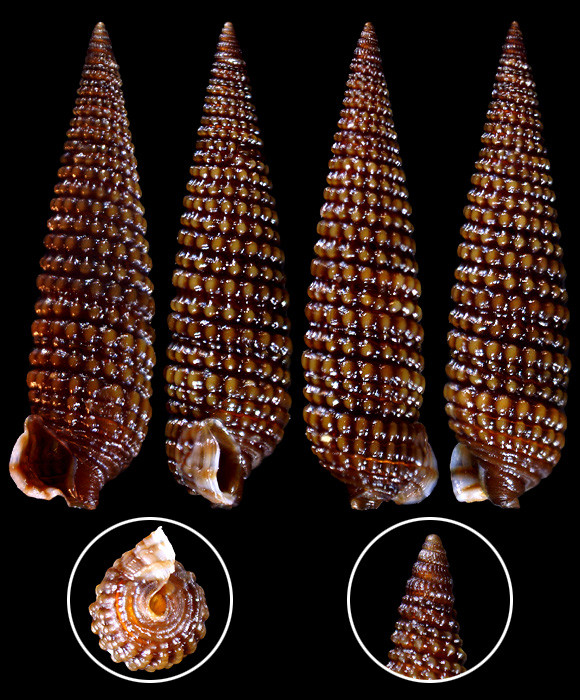
Original taxon: Murex adversus. Synonyms: obesulus, pseudobesula, punctatus, reticulatus.
« I create the genus Marshallora for the Triphoridae with a protoconch granulose apically, made of 4 to 5 whorls (for the planktotrophic species) adorned with a double keel and axial costae… » (Bouchet, 1984) – axial costae straight, while they are sinuous in Similiphora. There are two variants ex colore: one is the common uniformly brown, and the second bears a greyish-green colour on the first cord on each whorl.
On stones at 0,3-1m deep, Split, S. Croatia. 6,1mm.
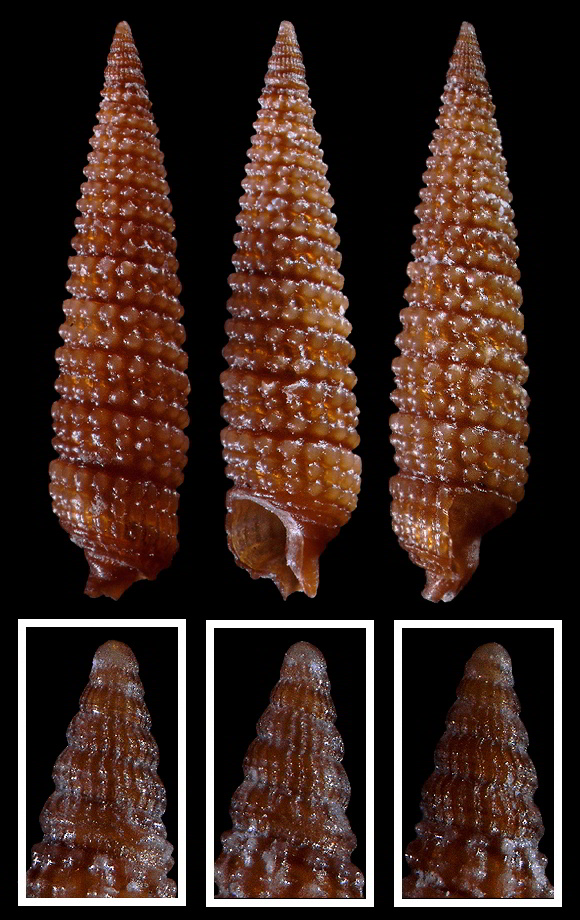
Embryonal shell finely pustulose apically. Larval shell: all whorls bicarinate, whorl 4 merging into the teleoconch. Subadult from 80-120m deep, in a rockery colonized by red coral, N. Morocco. 5mm. Notice the siphonal canal, open like in Similiphora similior, and not tubular as in usual Triphorids.
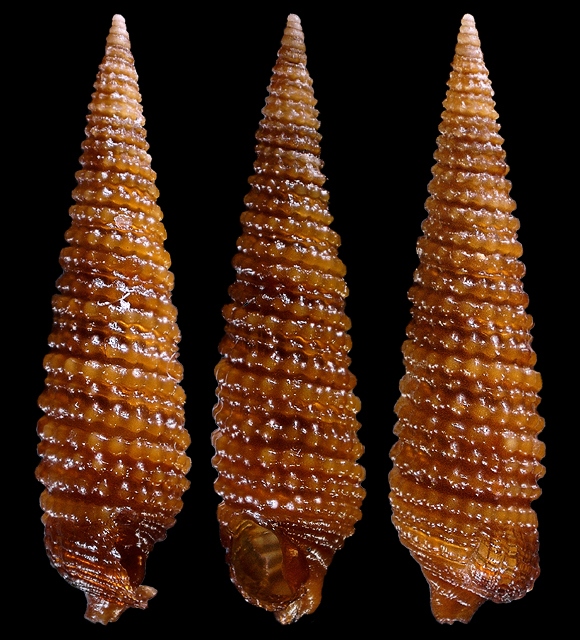
Protoconch eroded.
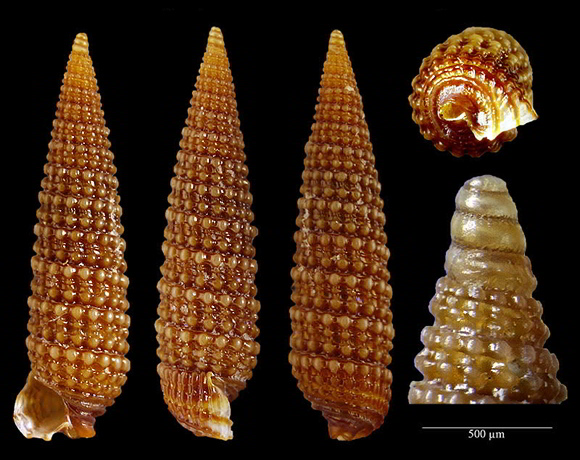
Marshallora adversa is one of the most common Triphorids in the NE. Atlantic; it varies in h/w ratio from 3,5 to 5 (Bouchet, 1985). – Above, an adult with again an eroded protoconch, from La Franqui, Leucate, Occitania, S. France. 7,5mm.
Original pictures provided by S. Clanzig (FR).
– CC BY-NC-SA –
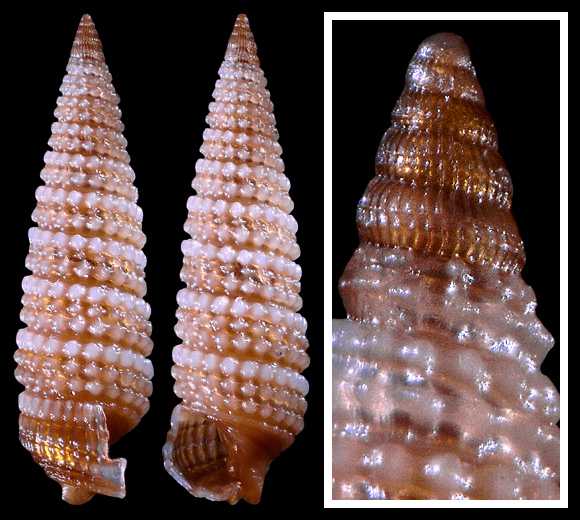
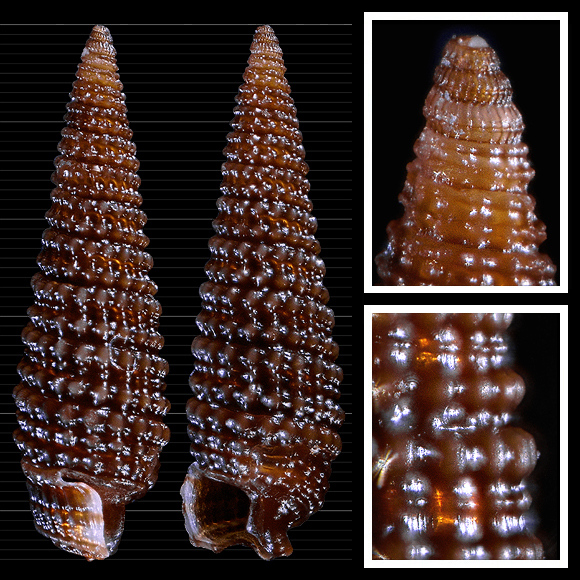
• The protoconch is bicarinate.
• On the last whorl, the fourth spiral cords is smooth.
• There are no additional cords appearing near the peristome.
This is an adversa.
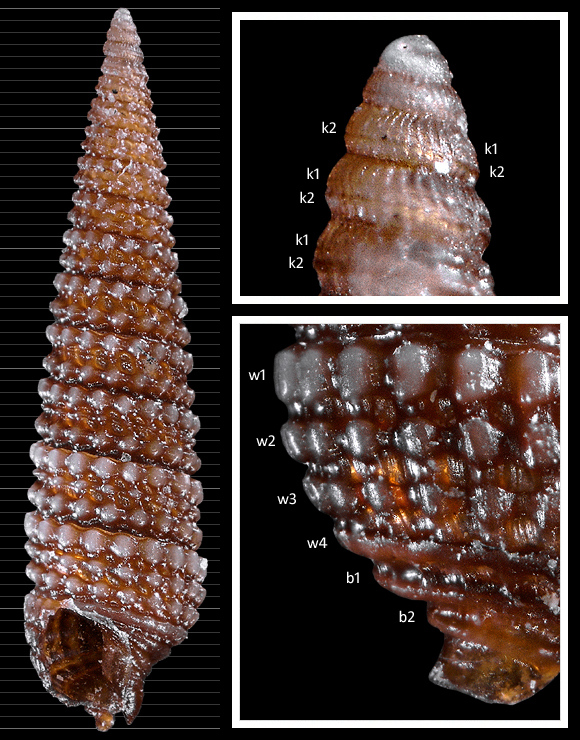
Protoconch bicarinate, the adapical keel (k1) appearing after the abapical one (k2). The fourth spiral cord on the body whorl is smooth (w4). Finally, there are no additional cords appearing near the peristome, between w1 and w2, or between w2 and w3. This is again an adversa. Subadult. 30m deep, La Mona, 6mm.
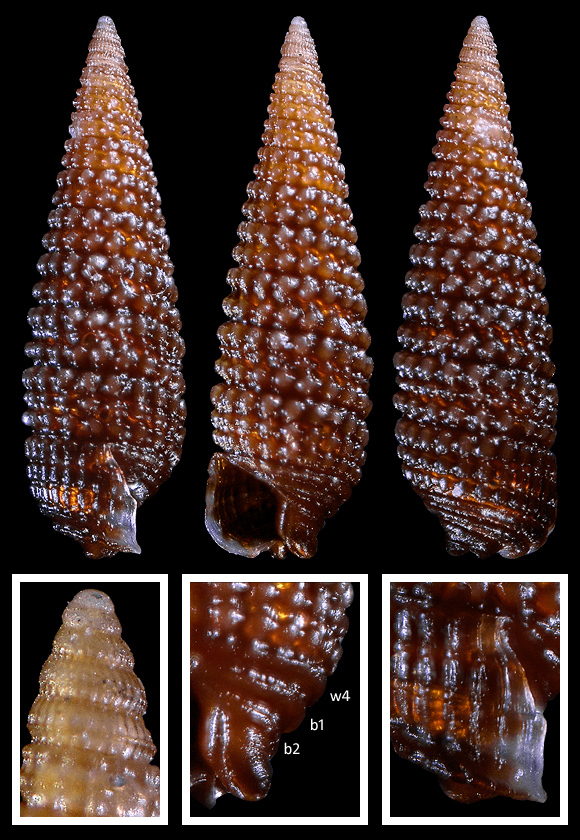
Protoconch bicarinate; fourth spiral cord w4 smooth; no additional cords near the peristome. Same spot. 4,5mm.